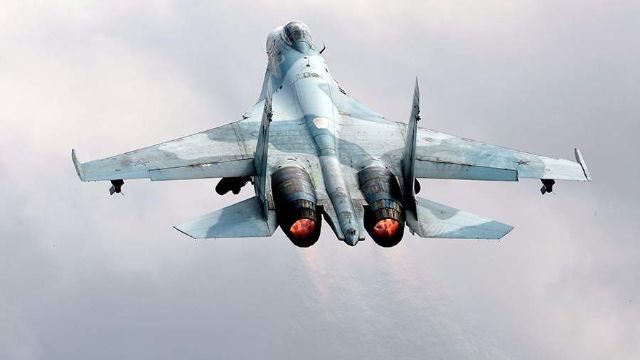
The JAS 39 Gripen fighter jets from Thailand’s Royal Air Force did an excellent job in joint exercises with PLAAF’s Su-27s. The Gripen demonstrated stellar efficiency in combat beyond visual range [BVR], with data showing that a noteworthy 88% of their success was accomplished from 19 miles away or more. This highlights the Thai Gripens’ expertise in engaging at long distances.

The Su-27 aircraft of the PLAAF encountered challenges during the exercises. They lost 41 of their Su-27s to the Thai pilots, against just nine Gripens lost on the Thai side. This showcases the impressive capabilities of the Gripen and highlights the need for the PLAAF to enhance its missile evasion strategies.
Thailand, being America’s longest-standing Asian ally, has faced some challenges in its relationship with the U.S. since the military coup in 2014. Now, Thailand is making moves to strengthen its connection with China through big defense plans.
In August 2015, Thailand and China solidified their partnership through the “Falcon Strike” joint military exercises with the People’s Liberation Army Air Force [PLAAF]. Most recently, these exercises were enacted in the Falcon Strike-2023 event, which takes place in Thailand and lasts for 21 days.
During these crucial joint drills, troops from both nations participate in intensive training across various areas. They practice air support tasks, land assaults, joint air defense mechanisms, and large-scale deployments. The ultimate goal of these drills? To boost each country’s battle readiness and enhance their cooperative operation skills.

Interestingly, Thailand melds Western and Eastern practices in its aircraft operations and combat tactics. Analysts believe that this unique mix greatly enhances the domestic training program of the PLAAF. The drills featured a key event that prominently displayed the abilities of the Royal Thai Air Force’s JAS-39 “Gripen” multirole fighter. This jet, manufactured in Sweden, was a highlight of the exercise.
In the late 1970s, the need to replace outdated aircraft like the Saab 35 Viggen and Saab 37 Draken combat aircraft paved the way for the development of the JAS 39 Gripen [Griffin]. Instead of opting for foreign models such as the American F-16 and F-18 fighters, Swedish officials wanted a homegrown solution.
They envisioned an aircraft versatile enough for fighter, attack, and reconnaissance missions. Endorsing this vision, the Swedish Parliament approved the project in June 1982.

The Gripen, Sweden’s first multirole combat aircraft, was born from a partnership between Saab, Saab Microwave Systems, Volvo Aero Corporation, Saab Avitronics, and FFV Aerotech. It’s a versatile piece of machinery, capable of intercepting, attacking ground targets, and carrying out reconnaissance missions. Its B and D versions even accommodate two crew members, thanks to an extended canopy.
The Swedish Air Force has been utilizing the fourth-generation multirole fighter since its first flight in 1988. It officially became operational in 1997. Of the 204 units ordered in three batches, 74 have been delivered to the Swedish Forces to date.
The Gripen, a globally recognized aircraft, had an impressive 158 units produced as of 2016. It’s notable for its international footprint, with active service in countries including Brazil, the Czech Republic, Hungary, South Africa, and Thailand.
Furthermore, the Gripen graces the runways of the United Kingdom’s Empire Test Pilots’ School, playing a crucial role in their training regimen.
The Royal Thai Air Force’s fleet of twelve Gripens probably took Beijing by surprise.